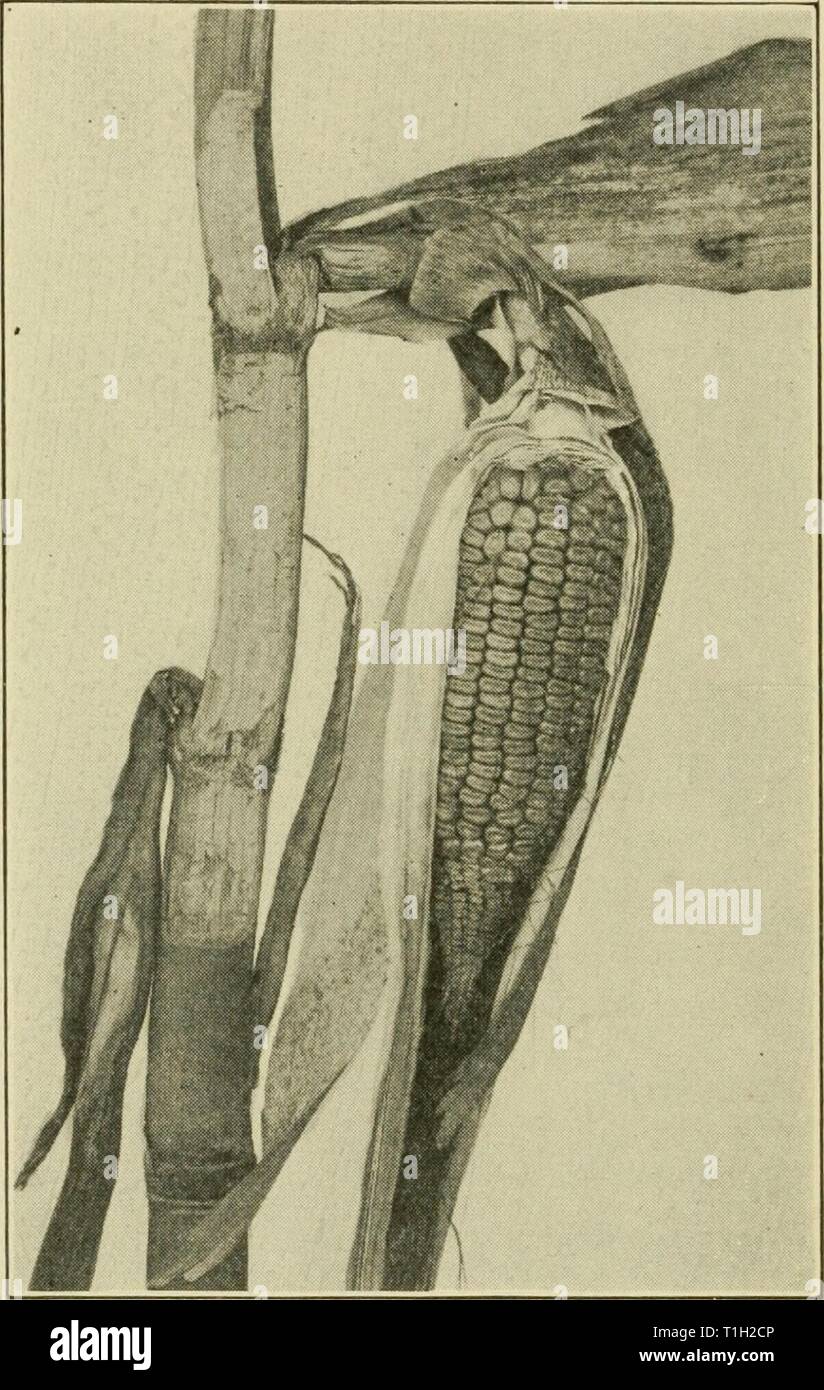Diseases of economic plants (1921) Diseases of economic plants diseasesofeconom01stev Year: 1921 290 Diseases of Economic Plants Selby, in Ohio. In 1914, Pammel, in Iowa, called attention to a serious root-rot of corn caused by a Fusarium. The disease is now known to prevail generally throughout the corn belt both in the South and the North. Though no ac- FiG. 153. — Rotten stalk and the nubbin re- sulting. After Hoffer. curate estimate has been made of the amount of damage, it is known that the loss is large. Among the symptoms are: 1. Poor stands due to missing hills, caused by defectiv

Image details
Contributor:
Bookend / Alamy Stock PhotoImage ID:
T1H2CPFile size:
5.7 MB (385.3 KB Compressed download)Releases:
Model - no | Property - noDo I need a release?Dimensions:
1126 x 1775 px | 19.1 x 30.1 cm | 7.5 x 11.8 inches | 150dpiMore information:
This image is a public domain image, which means either that copyright has expired in the image or the copyright holder has waived their copyright. Alamy charges you a fee for access to the high resolution copy of the image.
This image could have imperfections as it’s either historical or reportage.
Diseases of economic plants (1921) Diseases of economic plants diseasesofeconom01stev Year: 1921 290 Diseases of Economic Plants Selby, in Ohio. In 1914, Pammel, in Iowa, called attention to a serious root-rot of corn caused by a Fusarium. The disease is now known to prevail generally throughout the corn belt both in the South and the North. Though no ac- FiG. 153. — Rotten stalk and the nubbin re- sulting. After Hoffer. curate estimate has been made of the amount of damage, it is known that the loss is large. Among the symptoms are: 1. Poor stands due to missing hills, caused by defective germination. 2. Weak and stunted seedlings, many of which may eventually die. Stunted